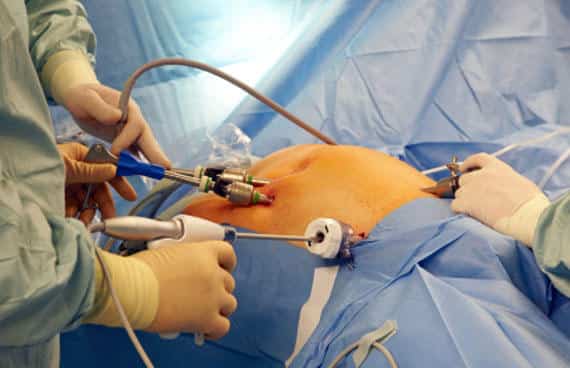Exploratory laparoscopy Tunisia
What is an exploratory laparoscopy ?
 An exploratory laparoscopy is a minimally invasive surgical procedure that uses a camera and surgical instruments inserted through small incisions to explore the abdominal cavity. It is used for the diagnosis and treatment of a variety of diseases, including digestive, gynecological, urological and cancer diseases. Exploratory laparoscopy reduces the risks of hemorrhage, infection and postoperative pain by allowing visualization of the internal organs without having to completely open the abdominal wall. It also has the advantage of reducing the number of scars.
An exploratory laparoscopy is a minimally invasive surgical procedure that uses a camera and surgical instruments inserted through small incisions to explore the abdominal cavity. It is used for the diagnosis and treatment of a variety of diseases, including digestive, gynecological, urological and cancer diseases. Exploratory laparoscopy reduces the risks of hemorrhage, infection and postoperative pain by allowing visualization of the internal organs without having to completely open the abdominal wall. It also has the advantage of reducing the number of scars.
What are the symptoms that may indicate the need for this surgery ?
Signs that may indicate the need for exploratory laparoscopy are acute or chronic abdominal pain, abnormal bleeding, persistent digestive problems such as bloating, nausea, vomiting or diarrhea, a feeling of heaviness in the abdomen , unexplained weight loss, abnormalities detected during imaging tests such as ultrasounds or scans, or a family history of gynecological diseases.
How does this surgery take place ?
To ensure the patient's comfort and safety during the procedure, he or she is placed under general anesthesia. The surgeon inserts an endoscope equipped with a camera and small surgical instruments into the abdomen to make small incisions. Live viewing on a screen allows the surgeon to explore the internal organs to find any abnormalities and carry out minor surgical procedures if necessary. The incisions are closed after the exploratory laparoscopy and the patient is monitored in the recovery room before being allowed to go home the following day. There are many benefits to this treatment, such as faster healing, reduced post-operative pain, and reduced risk of infections.
How long does it last ?
The duration of an exploratory laparoscopy may vary depending on several factors, including the complexity of the procedure, the anatomical conditions of the patient and the experience of the surgeon. An exploratory laparoscopy can generally last 30 to 1 hour. However, in some more complex situations this may require more time.
What are the alternatives to exploratory laparoscopy ?
Exploratory laparoscopy for abdominal exploration has several alternatives. These include procedures such as abdominal ultrasound, magnetic resonance imaging (MRI), and computed tomography (CT). Medical imaging techniques make it possible to visualize the tissues and internal organs of the abdomen without surgical intervention. Additionally, diagnostic tests and blood tests may be used to assess the presence of specific abdominal pathologies.
What are the expected results ?
Direct visualization of the abdominal organs such as the liver, intestines, kidneys and uterus in women is one of the expected results of such a procedure. This allows the surgeon to spot potential abnormalities such as tumors, cysts, adhesions or inflammation. Exploratory laparoscopy can be used to perform biopsies, tissue samples and minimally invasive surgical procedures to treat identified problems, in addition to making an accurate diagnosis. These results help determine the appropriate treatment for the patient and improve the chances of recovery.
What are the advantages ?
The advantages of exploratory laparoscopy include reduced scarring, a minimally invasive surgical approach that allows access to the abdomen without completely opening the abdominal wall, generally faster recovery, more comfortable postoperative period, shorter hospitalizations , increased precision of the surgical procedure, detailed visualization of internal organs, advanced therapeutic possibilities and reduction of scars.
What are the associated risks ?
There are risks associated with exploratory laparoscopy, as with any surgical procedure. Hematomas or infections at the scar site, damage to nearby organs during trocar insertion, allergic reactions to anesthesia or materials used, postoperative pain, wound healing complications, and others Rarer risks are some of the potential complications.